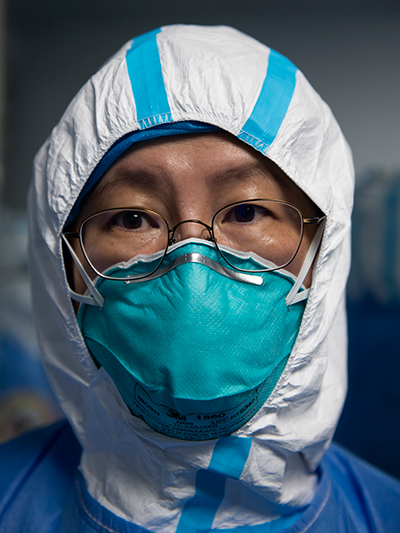A sense of direction
By Li Yingxue | China Daily | Updated: 2020-08-24 07:45

Team building
A day after the Chinese New Year, Jiang took the train to Wuhan, the Chinese city hit hardest by COVID-19.
The next day, she started work in Jinyintan Hospital, one of the designated hospitals for COVID-19 patients in Wuhan, where regular wards had been repurposed into the 30-bed ICU she took over.
The work waiting for her was tough. She not only had to establish a workflow in the special wards, but also coordinate a team made up of medical staff from different hospitals with different professional backgrounds, working practices and habits.
"The communication between the ward and the outside working zones only took place via two way radios then, and the doctors who were in the wards were not able to see the patients' information, such as laboratory test reports," Jiang recalls. "With the limited protection equipment available at the time, we couldn't just walk onto the ward to treat the patients whenever we needed to like we can in a normal ICU, but we had to maximize the work when we were inside."
Jiang figured out a clumsy way-a doctor always brought a piece of paper onto the ward, upon which he or she would have written down key facts and figures of the patients and their planned treatment.
"After seeing the patients, the doctor would write down what treatment needed to be changed or adjusted on the paper and paste it to the window so that another team member outside could take a photo and pass the message on to the wider team," Jiang says.
"Not a single needle could be brought out of the wards because of the highly infectious nature of the disease, so we could only use this system," she says.
To ensure the cooperation between team members ran smoothly was another challenge-the slang used to describe certain medicine or procedures, to the sequential order of an operation all need to be unified.
"For example, the nurses had to fully understand the doctor's prescription including drug dosage and the infusion speed," Jiang explains, adding that some of the nurses were not trained to work in the ICU, meaning that they needed to get up to speed very quickly.
The team workflow was gradually established by Jiang and other members continually changing and perfecting the rules until it was on the right track.
























